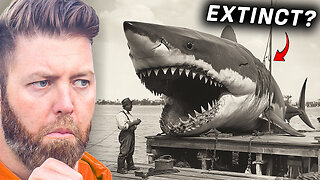Premium Only Content

The Island To Avoid On Earth - The Snake Island
Snake Island, officially known as Ilha da Queimada Grande, is a small island located approximately 90 miles (145 kilometers) off the coast of São Paulo, Brazil. It is renowned for its large population of venomous snakes, particularly the Golden Lancehead Viper (Bothrops insularis), which is considered one of the most venomous snakes in the world.
Here are some key points about Snake Island:
Venomous Snakes: The Golden Lancehead Viper is a species of pit viper that is endemic to Snake Island. The snake's venom is highly potent, and there is no known antivenom for its bite. The presence of these snakes has led to the island being considered dangerous to humans.
Restricted Access: Due to the potential danger posed by the snakes, access to Snake Island is strictly regulated by the Brazilian government. Visitors are generally not allowed, except for a few selected researchers and personnel with special authorization.
Conservation Significance: Despite the restrictions on human access, Snake Island is of interest to scientists and conservationists because it is one of the few places where the Golden Lancehead Viper is found. The species is critically endangered, and the island serves as an important habitat for its survival.
Isolation and Evolution: The snakes on Snake Island are believed to have evolved in isolation over thousands of years, leading to unique characteristics in the population. The lack of natural predators on the island has contributed to the snakes' dominance.
Naval Lighthouse: The Brazilian Navy maintains a lighthouse on Snake Island to aid navigation in the region. The lighthouse is automated, and maintenance visits are infrequent due to the risks posed by the snakes.
It's important to note that the "Snake Island" nickname is due to the abundance of snakes, and the island has a more formal name (Ilha da Queimada Grande). While the island has gained a reputation for its snake population, efforts are made to study and conserve the unique ecosystem
-
 14:22
14:22
Forrest Galante
15 hours agoDoes The Megalodon Still Exist?
83.7K27 -
 26:48
26:48
Stephen Gardner
10 hours ago🔥BREAKING: Vladimir Putin JUST shocked NATO | Will only negotiate with Trump!
130K288 -
 2:45:39
2:45:39
Tundra Tactical
13 hours ago $34.21 earnedTundra Nation Live : The Worlds Okayest Gun Live Stream
65.6K2 -
 17:06
17:06
Professor Nez
11 hours ago🚨BREAKING: Elon Musk to BUY MSNBC!? Dems STUNNED by Brian Williams’ Viral Video!
59.2K77 -
![If You Smell LALALALA What CHiLi IS COOKING!!... #RUMBLETAKEOVER [Overwatch 2]](https://1a-1791.com/video/s8/1/e/s/X/3/esX3u.0kob-small-If-You-Smell-LALALALA-What-.jpg) 4:27:40
4:27:40
CHiLi XDD
13 hours agoIf You Smell LALALALA What CHiLi IS COOKING!!... #RUMBLETAKEOVER [Overwatch 2]
34.5K1 -
 12:00:03
12:00:03
Delnorin Games
14 hours ago🔴 Live - Star Citizen
83.6K15 -
 1:39:44
1:39:44
HELMET FIRE
15 hours agoDEADROP IS BACK!
160K11 -
 10:03
10:03
Tundra Tactical
17 hours ago $15.76 earnedBrandon Herrera Vies Bid for ATF Director!
103K17 -
 22:01
22:01
DeVory Darkins
1 day ago $39.05 earnedHakeem Jeffries SHUTS DOWN The View as Matt Gaetz Speaks out
91.1K147 -
 2:02:54
2:02:54
Mally_Mouse
16 hours agoLet's Play!! - Spicy Saturday
68.8K2